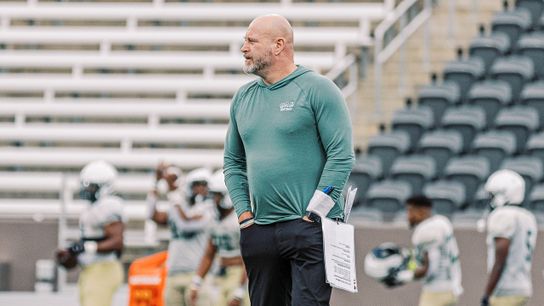Name, Image, and Likeness has been an absolute game changer in college football, and paired with the transfer portal it has many fans of the game viewing Group of Five programs as the farm system for the Power Five leagues.
While Deion Sanders is capturing the majority of headlines this off season utilizing the transfer portal and NIL to completely flip the roster in Boulder and not hiding from the realities of it, so many coaches taking over new programs are working just as hard to retain their roster as they are at recruiting high school talent, and that is especially true at the Group of Five level.
Trent Dilfer has made the rare head coaching jump from high school football to the FBS level, and NIL and the portal are just one of the many new uncharted areas.
As UAB is set to join the AAC on July 1 as their new conference home, Dilfer was asked to give an NIL number that would make the Blazers competitivein their new league.
Andy Wittry of On3Sports pointed out recently Dilfer wasn't willing to share a figure.
Why?
"I think everyone knows I'm honest about everything. I'll say what everybody else was thinking," he shared. "But on this one, I don't know if we know in our hearts because when it comes down to retention - cause that's really what you want to use [NIL] for is retention - who are you competing against?"
UAB has been one of the Group of Five's most consistent programs over the past decade with Bill Clark at the helm, and while players transferring from Group of Five to Power Five programs is nothing new, the enticement of - legal - NIL money is a new factor just introduced in the last few years.
In Dilfer's mind, he's not competing to keep guys they have developed into top players with other AAC programs, they're competing to keep them against some of the top programs in college football, including ACC and SEC teams.
"I'm not competing against Tulane and UTSA for retention. I'm competing against Georgia, Alabama, Ole Miss, Arkansas, Tennessee, North Carolina, Clemson, South Carolina, right? That's who I'm competing against. So how can I say - if they can offer $400,000, do I need to even offer $50,000?"
"So do you even try to retain that player? If you develop a player and he's good enough to make that type of money at a program that would be perceived up from us - economically, for sure - well, as a player-centric coach, isn't it my job to encourage him to take that money if he doesn't hurt his chances of making generational wealth at the next level? And there lies the kicker."
That's the double-sided sword and very real moral conundrum many coaches, especially at the Group of Five and FCS level, are finding themselves in.
